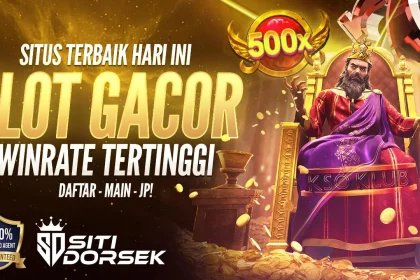Since its inception, Counter-Strike (CS) has evolved from a humble counter-strike 1.6 download mod to one of the most influential and popular first-person shooters in the world. Released originally in 1999 as a modification for Half-Life, the game quickly captured the attention of gamers with its unique combination of tactical gameplay, team-based mechanics, and intense gunplay. Over the years, Counter-Strike has not only shaped the future of competitive gaming but has also fostered a vibrant, dedicated global community.
The Origins of Counter-Strike
Counter-Strike was created by Minh “Gooseman” Le and Jess “Cliffe” Cliffe, two developers who were passionate about tactical shooters. Initially, the game was simply a mod designed to offer a more realistic and strategic alternative to the fast-paced, arcade-style shooters of the time, like Quake and Unreal Tournament. The mod introduced two teams: the Counter-Terrorists and the Terrorists. The objective was simple: the Terrorists would plant a bomb, and the Counter-Terrorists would prevent it or defuse it. Alternatively, Counter-Terrorists could also eliminate the Terrorist team, while the Terrorists could win by taking out all their opponents.
This basic concept, along with a balanced blend of tactical decision-making, cooperation, and skill, set Counter-Strike apart. Unlike the traditional “run and gun” shooters, CS required players to use cover, communication, and strategy to outsmart their opponents. The realism, though not perfect by today’s standards, was a game-changer, offering a different kind of challenge than other games at the time.
The Growth and Evolution of the Franchise
As the mod gained traction, it was picked up by Valve, the developers behind Half-Life. This partnership allowed the game to grow beyond its humble origins and reach a much wider audience. In 2000, Counter-Strike 1.0 was officially released as a standalone product, followed by several updates that refined the gameplay and added new features.
Over the next few years, Counter-Strike went through several versions, each introducing improvements and changes. Counter-Strike 1.6 became the definitive version for competitive play. While still maintaining the core gameplay of planting bombs and eliminating enemies, the game saw new maps, updated weaponry, and tweaks to the game’s economy system, which made managing money a crucial part of each match. This added a layer of strategy, as players would have to make decisions about what to buy for the next round, balancing firepower and utility with limited resources.
In 2012, Valve released Counter-Strike: Global Offensive (CS:GO), the game that would solidify Counter-Strike as a cultural phenomenon. While it stayed true to its roots, CS:GO introduced new mechanics, such as the ability to purchase skins, improved graphics, and a more polished user interface. The game also refined its balance to make competitive play more accessible, while still maintaining a high skill ceiling.
The Competitive Scene
One of the defining aspects of Counter-Strike is its competitive scene. Early on, the game gained popularity in LAN tournaments, where players would gather in local arenas to battle it out for glory. In the early 2000s, Counter-Strike tournaments, such as those held by CPL (Cyberathlete Professional League) and ESWC (Electronic Sports World Cup), were pivotal in defining the competitive gaming landscape.
With the release of CS:GO, the competitive scene reached new heights. The introduction of the Steam platform allowed for easier matchmaking and the development of a global player base. Today, Counter-Strike: Global Offensive boasts a massive, dedicated following, with tournaments like The International, DreamHack, and the ESL Pro League offering millions of dollars in prize money.
The competitive integrity of CS:GO is maintained through a carefully curated ranking system and ongoing balance changes. Professional teams, including legendary organizations like Astralis, FaZe Clan, and Team Liquid, battle it out in front of millions of viewers online and at live events. CS:GO’s global esports scene remains one of the most successful and prestigious in the industry, attracting a diverse audience ranging from casual fans to hardcore esports enthusiasts.
The Enduring Appeal
What sets Counter-Strike apart from other first-person shooters is its timeless appeal. The gameplay, while simple in concept, is incredibly deep. The constant push and pull between the Terrorists and Counter-Terrorists creates a thrilling experience with each round, where every decision matters. From the choice of weapons to the strategies employed, no two games are ever the same.
The skill ceiling in Counter-Strike is also exceptionally high, meaning that players can continuously improve and refine their abilities. The tight, responsive gunplay, combined with a deep understanding of map control, positioning, and teamwork, creates a challenging but rewarding experience. This has kept players coming back for years, whether they are new to the game or veterans of the series.
Another factor in Counter-Strike’s success is its accessibility. Although the learning curve can be steep, players of all skill levels can enjoy the game. The focus on teamwork means that even if you’re not the best shot, you can still contribute to your team’s success by communicating, coordinating, and supporting your teammates.
Counter-Strike in Popular Culture
The influence of Counter-Strike extends beyond gaming. The game’s competitive culture, memorable catchphrases, and iconic moments have become ingrained in internet culture. Memes, fan art, and video montages featuring epic shots and clutches are widespread across social media and YouTube. The phrase “CS:GO” has become synonymous with tactical FPS gaming, and the game has inspired a generation of future developers and gamers.
Even the game’s cosmetics, such as weapon skins and stickers, have become a part of its cultural footprint. The ability to purchase, sell, and trade skins has led to a robust market, where rare skins can fetch high prices. These cosmetic items have contributed to the game’s long-term appeal, offering players a way to customize their experience and invest in their passion.
Looking to the Future
The future of Counter-Strike remains bright. With a dedicated player base and an active development team constantly improving the game, CS:GO is likely to remain at the forefront of the competitive gaming scene for years to come. Whether through new maps, features, or enhancements, Counter-Strike continues to evolve while staying true to the elements that made it a beloved classic.
As esports continues to grow, the next chapter of Counter-Strike could see even greater advancements in player engagement, broadcast technology, and global accessibility. The passion for the game, paired with its enduring appeal, ensures that Counter-Strike will remain a staple in the gaming world for the foreseeable future.
Conclusion
From a simple mod to a cultural juggernaut, Counter-Strike has become more than just a game. It’s a legacy, a way of life for millions of players around the world. Its strategic depth, competitive nature, and unmatched community spirit have made it a beloved franchise in the gaming world, and it shows no signs of slowing down. Counter-Strike is, and will continue to be, a cornerstone of both gaming and esports history.


